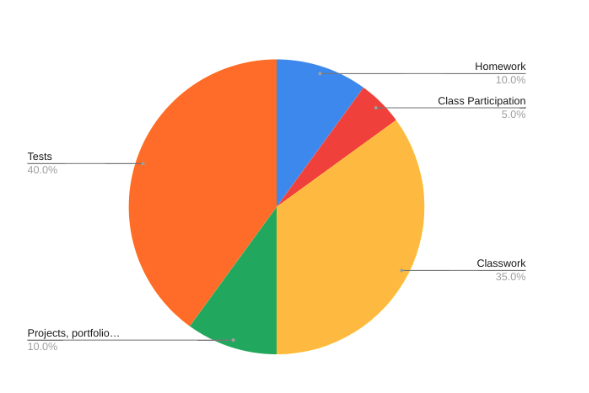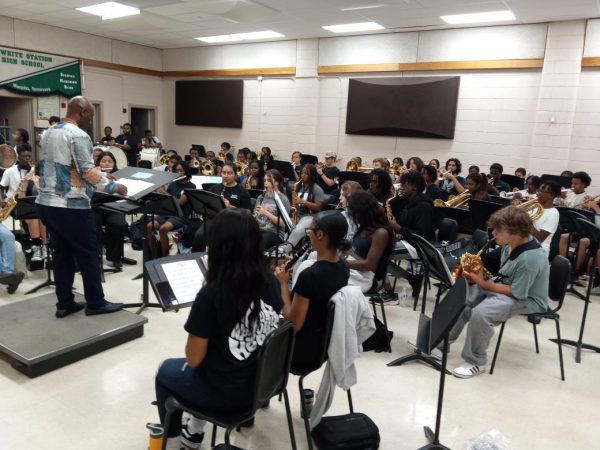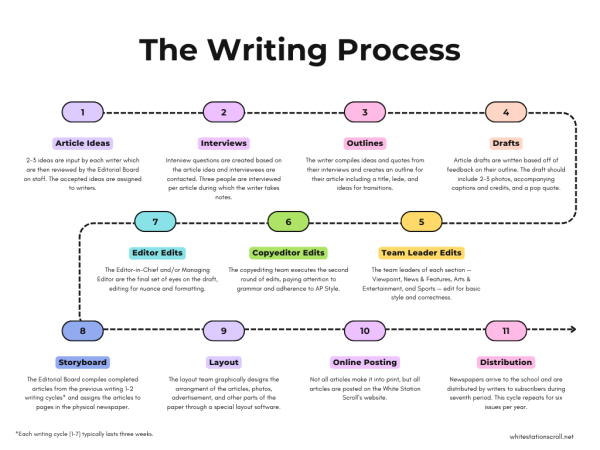District implements new grading scale policy

The new Shelby County Schools grading policy divided grades into five categories, each with a minimum assignment number. Participation, for example, is worth 5% of students’ overall grade, and teachers must have a minimum of four homework assignments per quarter.
Two weeks into the 2019-2020 school year, Shelby County Schools implemented a one size fits all mandatory grading scale. While some see the new consistency as beneficial, the lack of individuality within the classroom presents new challenges for non-core classes.
Previously, teachers created their own grading scale to match their curriculum. However, inconsistency among teachers’ grading scales, even within the same subject matter, pushed the Board to make a standard-based scale, with tests worth 40%, classwork worth 35%, homework and projects worth 10% each and participation worth 5%.
“Too many teachers did not have a variety of assessments,” ninth-grade English teacher Tracy Duckworth said.
AP Physics teacher Maridee Cornell recognizes the efforts made to provide consistency for transient students.
“We have a lot of students, even here at White Station that come and go. They were trying to make things more consistent for them,” Cornell said.
Another district goal was to prepare students for the TNReady exam, a state-wide standardized test given every year to reflect what students retain throughout the year.
“We want to ensure we get a true temperature about how our students were achieving,” Deputy Superintendent of Schools Angela Whitelaw said. “As teachers give tests at the end of the week or every two weeks, we wanted to make sure that students and parents understood that those assessments have a lot of weight.”
For many non-core classes, however, the low weight of class participation in the district scale does not reflect the class curriculum. Activities that require participation such as playing an instrument make up most of their classwork and assessments.
“As a performance-based class, we function very differently than a math or science or English class,” band director Brian Sims said. “We don’t have task-oriented sections like other classes do; we have task-oriented goals but every single student is at a whole different level.”
These struggles extend outside the fine arts too, seeping into classes such as physical education where running laps or playing volleyball is more pertinent than a traditional pen and paper test.
“With me being a lifetime wellness and a P.E. teacher, my focus was on participation, sportsmanship, and some tests. I want to jumpstart a healthy lifestyle. I want to make sure kids are healthy mentally, physically and emotionally,” Coach Mario Stevenson said.
Teachers’ exasperations are not only about the scale categories and weighings but also about the belated implementation of the policy, not to mention the lack of communication regarding the new system from the school board.
“I think they should’ve really thought about this just a little bit more,” Duckworth said, who found out about the new policy over Facebook.
While there seems to be a lot of backlash against the new policy, there are still many teachers who do not have strong feelings about it either way, discovering that the new scale won’t make much of a difference for their students’ grades or how they run their classroom.
“I don’t know that it’s actually hurting any particular subject, and in some respects, I don’t know that it’s helping any subject,” Sims said.
Whether teachers are for or against the new grading scale, it is here to stay for the foreseeable future.
Your donation will support the student journalists of White Station High School. Your contribution will allow us to purchase equipment and cover our annual website hosting costs.











































